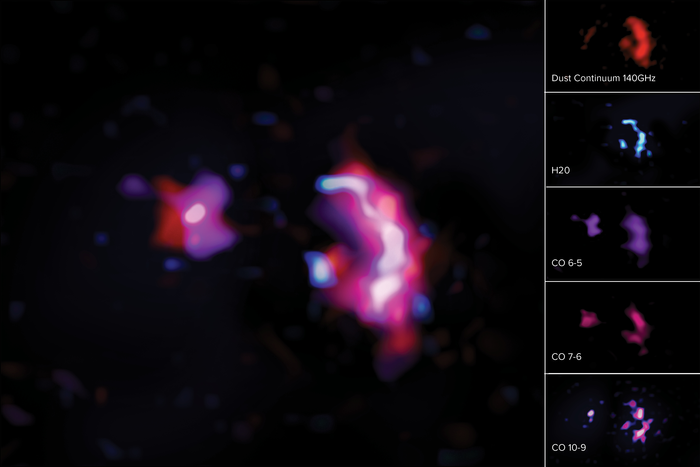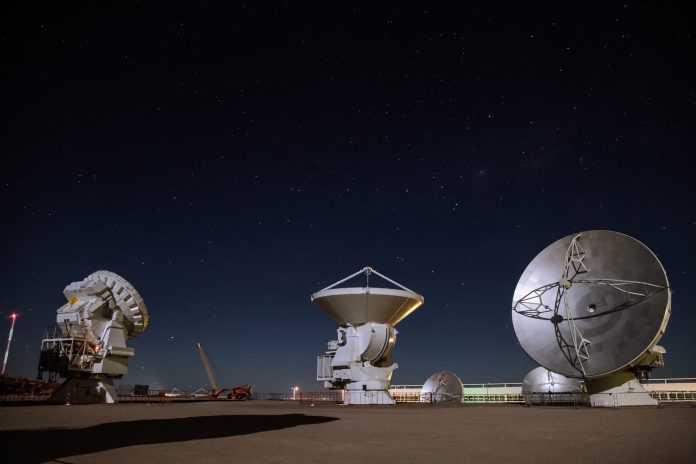The ALMA telescope has found signs of water in a distant galaxy, over 12 billion light years away from Earth
In new data from the Atacama Large Millimeter Array (ALMA), scientists have found an astonishing fact.
Over 12.88 billion light years from Earth, there are signs of water. The new study, published in The Astrophysical Journal, finds that water is detectable in the biggest galaxy in the early Universe.
Alongside H20, the team found carbon monoxide. The detection of these two molecules in abundance proposes that the molecular Universe was going strong – just after the elements were forged in early stars. This is the most detailed study available on the molecular gas content of a galaxy in the early Universe right now, with the most distant detection of water.
“This exciting result, which shows the power of ALMA, adds to a growing collection of observations of the early Universe,” said Joe Pesce, astrophysicist and ALMA Program Director at the National Science Foundation.
“These molecules, important to life on Earth, are forming as soon as they can, and their observation is giving us insight into the fundamental processes of a Universe very much different from today’s.”

“Critical to life” explains principal investigator
Sreevani Jarugula, an astronomer at the University of Illinois and the principal investigator on the new research, said: “Using high-resolution ALMA observations of molecular gas in the pair of galaxies known collectively as SPT0311-58 we detected both water and carbon monoxide molecules in the larger of the two galaxies. Oxygen and carbon, in particular, are first-generation elements, and in the molecular forms of carbon monoxide and water, they are critical to life as we know it.
“This galaxy is the most massive galaxy currently known at high redshift, or the time when the Universe was still very young. It has more gas and dust compared to other galaxies in the early Universe, which gives us plenty of potential opportunities to observe abundant molecules and to better understand how these life-creating elements impacted the development of the early Universe.
“This study not only provides answers about where, and how far away, water can exist in the Universe, but also has given rise to a big question: How has so much gas and dust assembled to form stars and galaxies so early in the Universe? The answer requires further study of these and similar star-forming galaxies to get a better understanding of the structural formation and evolution of the early Universe.”
Sadly, none of this means that we can travel to a water-dwelling planet anytime soon. The early Universe is physically inaccessible to us, but we can still see signs of water unfolding with the technology we have.











